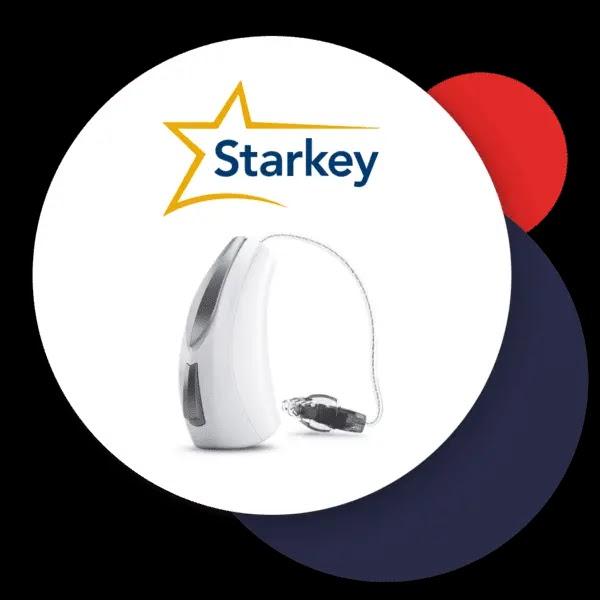Emerging Technologies in Hearing Loss Research
Hearing loss research is already making its mark in 2024. This exploration into the latest developments in hearing loss research is reshaping our understanding. It is also altering our approach to managing this widespread condition. At Stanford Hearing Center, we are dedicated to integrating these advancements to enhance the lives of individuals with hearing challenges.
Deepening Understanding of Hearing Loss Impacts
Research on hearing loss has significantly deepened our understanding of its wide-ranging impacts. This condition, once viewed primarily as an auditory deficit, is now recognized as a complex issue with far-reaching implications affecting various aspects of an individual’s life.
Cognitive Health and Hearing Loss:
A pivotal piece of research on hearing loss published in 2023 in JAMA Otolaryngology-Head & Neck Surgery provided compelling evidence linking hearing loss with an increased risk of dementia. The study found that for every 10 decibels of hearing loss, the risk of developing dementia increased by 25%. This research on hearing loss suggests a crucial interplay between auditory health and cognitive function.
Additionally, further research on hearing loss has indicated that individuals with untreated hearing loss may experience a faster rate of cognitive decline compared to those with normal hearing. Theories suggest that the additional cognitive load required to process sound can tax the brain, potentially accelerating cognitive decline.
Discover more about hearing loss and dementia.
Social and Emotional Consequences:
Research on hearing loss in the Journal of Gerontology: Series B highlighted the social ramifications of hearing impairment. Individuals with hearing loss are more likely to experience social isolation and depression. This is attributed to the challenges they face in communication, which can lead to withdrawal from social interactions and feelings of loneliness.
Moreover, this research on hearing loss underlines the emotional toll it can take on individuals, including feelings of frustration, embarrassment, and decreased self-esteem, further exacerbating the risk of social withdrawal and emotional distress.
Physical Health Risks:
In 2021, research on hearing loss in the Journals of Gerontology: Series A shed light on the physical dangers associated with hearing loss, particularly in older adults. This study found a significant correlation between hearing loss and an increased risk of falls and injuries. The research suggests that hearing loss can impair spatial awareness and balance, making falls more likely.
This research on hearing loss also points to the broader health implications of hearing impairment, including a potential increased risk of accidents and injuries due to reduced environmental awareness. The findings from these studies and ongoing research on hearing loss underscore the importance of viewing hearing loss not just as an isolated sensory issue but as a condition with comprehensive health implications. It highlights the need for early detection, effective management strategies, and a holistic approach to care that considers the auditory, cognitive, social, and physical dimensions of hearing loss. This more nuanced understanding of the impacts of hearing loss is critical in developing targeted interventions and support systems that can improve the overall quality of life for those affected.
Understand more about what causes presbycusis in seniors.

A white Starkey hearing aid stands on a white background.
Technological Innovations in Hearing Aids
We are remarkable technological advancements in hearing aids, largely driven by continuous research on hearing loss. These innovations have transformed hearing aids from simple sound amplification devices to sophisticated tools that significantly enhance the auditory experience. Let’s look at these technological breakthroughs:
Advanced Artificial Intelligence (AI) Applications:
- Customizable Listening Experiences: AI has redefined personalization in hearing aids. Leveraging research on hearing loss, AI algorithms now analyze individual hearing profiles to adjust settings like noise reduction and speech enhancement automatically. This technology ensures that the hearing aid user receives a tailored listening experience, adaptable to different environments.
- Real-time Sound Processing: AI’s capability to process sounds in real-time has revolutionized how hearing aids interact with the environment. Whether in a noisy restaurant or a quiet room, AI can adjust the hearing aid’s settings to optimize the user’s listening experience.
- Speech Clarity Enhancement: One of the most notable applications of AI, derived from research on hearing loss, is its ability to isolate and enhance speech clarity. This feature is especially beneficial in environments where background noise can overpower speech, allowing users to engage in conversations more effectively.
Seamless Connectivity and Integration:
- Smart Device Compatibility: Modern hearing aids offer seamless connectivity with smartphones, tablets, and smartwatches. This integration, which stems from ongoing research on hearing loss, allows users to control their hearing aids.
- Bluetooth Advancements: Bluetooth technology in hearing aids has evolved, enabling high-quality audio streaming from various devices. Users can easily stream music, take phone calls, and even attend virtual meetings directly through their hearing aids.
Health Monitoring Capabilities:
- Vital Signs Tracking: In line with recent research on hearing loss, some of the latest hearing aids are equipped with sensors that monitor vital health data. They track heart rate, body temperature, and even oxygen saturation, providing valuable health insights.
- Early Detection of Health Issues: These advanced hearing aids can alert users to potential health concerns, such as elevated heart rates or signs of fever, encouraging timely medical consultation.
Innovations in Design and Comfort:
- Discreet and Fashionable Designs: Today’s hearing aids are designed to be virtually invisible, appealing to users who want to hide their devices. Sleek designs and smaller sizes make them less noticeable while still delivering powerful performance.
- Comfort and Ease of Use: Modern hearing aids are designed for comfort, even during extended wear. The ergonomic designs and advanced materials used in their construction reduce the feeling of having a foreign object in or around the ear.
In summary, the technological advancements in hearing aids in 2024 represent a monumental shift in the management of hearing loss. These innovations, born from dedicated research on hearing loss, enhance the quality of sound. Also, they enrich the overall user experience. They underscore the evolving landscape of hearing technology. The advancements promise an even more integrated and user-friendly future for individuals with hearing impairments.
Learn more about how do hearing aids work.
Stem Cell Research in Hearing Loss Treatment
Stem cell research is one of the most exciting areas in the treatment of hearing loss. This cutting-edge research on hearing loss is exploring the potential of stem cells. One way is by regenerating damaged hair cells in the inner ear. Other ways include:
- Regenerative Potential: Stem cell research on hearing loss focuses on developing methods to regenerate the crucial hair cells in the cochlea.
- Diverse Stem Cell Types: This research on hearing loss investigates various stem cells, including embryonic, induced pluripotent, and amniotic fluid stem cells. They each offer unique potential for treating hearing loss.
Despite the challenges, significant progress is being made in stem cell research on hearing loss, with several clinical trials underway.
Keeping Up-to-date with Hearing Loss Research
Staying informed about the latest on hearing loss is critical for individuals affected by or interested in hearing health. It offers insights into new treatments and an understanding of the evolving landscape of hearing care:
- Institutions like NIH and NIDCD and organizations such as ASHA are excellent sources for the latest research on hearing loss.
- Enrolling in clinical trials and joining advocacy groups are ways to contribute to and stay abreast of research on hearing loss.

A young girl plays with her grandparents.
Navigating the Future of Hearing Health
As we progress through 2024, Stanford Hearing Center will leverage these research developments on hearing loss. We encourage individuals with hearing challenges to explore how these innovations can enhance their lives. The research on hearing loss has opened doors to advanced treatments and improved quality of life for millions worldwide. We invite those experiencing hearing difficulties to connect with us. Discover the life-changing benefits of these cutting-edge technologies and treatments. As research on hearing loss continues to progress, we remain dedicated to providing the highest standard of care.
